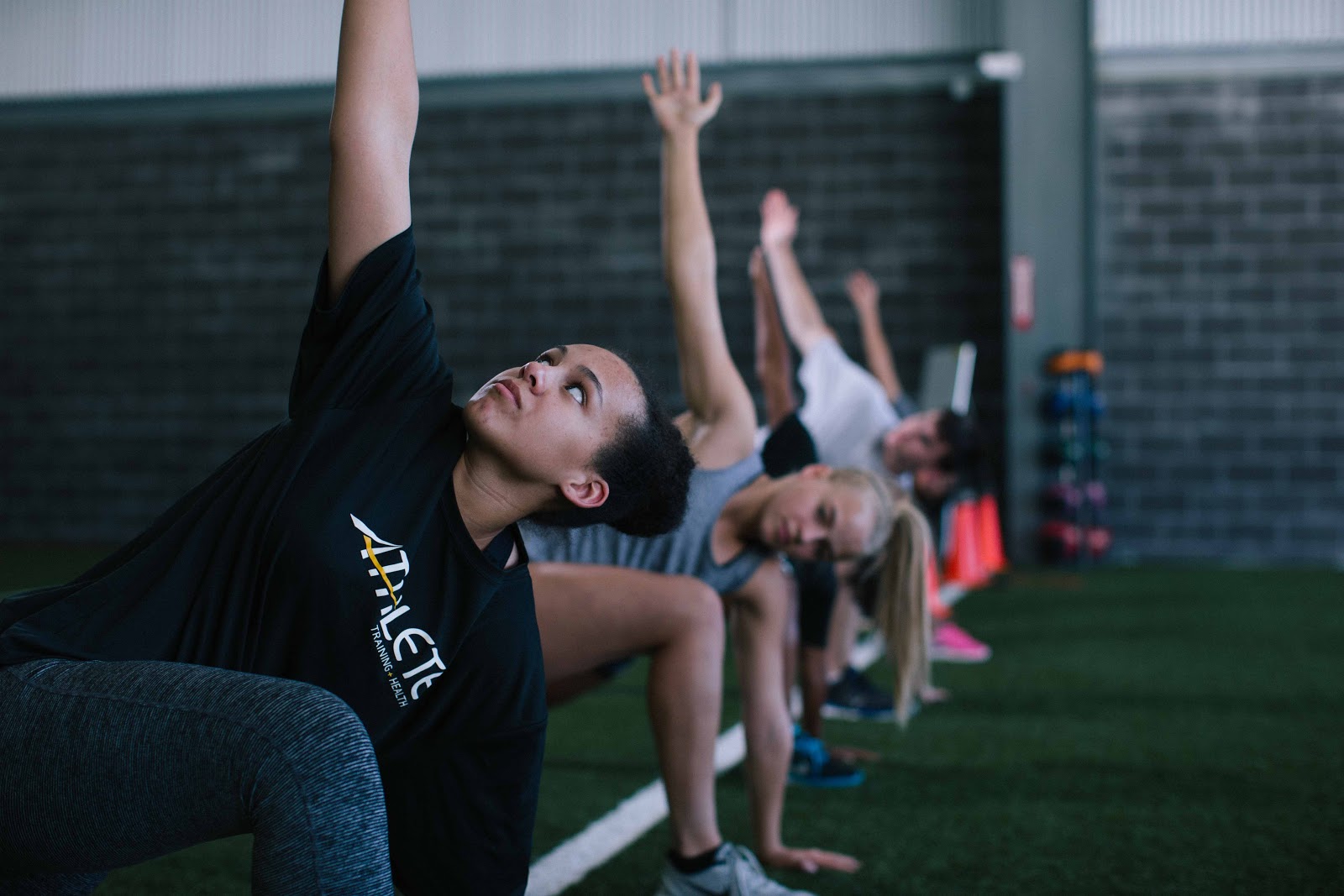One of the most commonly asked questions the sports medicine professional receives relates to the age-old question of: “what causes a cramp?” As a physical therapist, I often find myself cringing at the thought of opening the can of worms that comes with answering this question honestly. My truthful answer as a professional healthcare provider? We still don’t fully know. However, direct the same question to any of your friends within your exercise/fitness network and you’ll hear several far more impressive answers:
“It’s related to hydration. Have you been drinking enough?”
“I always cramp when I don’t take in enough electrolytes. You need to get some potassium. Go grab a banana.”
“Salt levels for sure. Salt tablet or some chips/pretzels.”
“It’s a ‘heat cramp.’ Your muscles are producing too much heat for your body to handle.”
While well-intended, and perhaps part of the “cramping puzzle,” the evidence doesn’t directly correlate cramping solely to any of these variables. Researchers are confident that cramping is 1.) multi-factorial in nature (1) and 2.) likely individualized (2), meaning that athletes will have to pay careful attention to things that predispose or occur prior to their bouts of cramping. However, this leaves a lot unanswered. Unfortunately, cramping is difficult to reproduce in a lab setting to study and draw inferences on. Field studies with actual athletes require careful planning, self-report questionnaires and diligence from subjects included. The full answer is often difficult to determine.
Lucky for us, a study was published by Schwellnus and colleagues in the British Journal of Sports Medicine in 2010 that sought to identify risk factors that predisposed Ironman triathletes to exercise-associated muscle cramps. (This is the term that we now use within the medical field to describe cramps that occur while exercising. “Heat cramps” is an incorrect term; we know that heat produced by a metabolically active muscle does not actually produce cramping. 1-4)
Athletes will have to pay careful attention to things that predispose or occur prior to their bouts of cramping.
Schwellnus and his team recruited 210 triathletes at an Ironman event held in South Africa. They investigated multiple variables often discussed in the fitness community that many believe relate to cramping: electrolyte levels, hydration levels, previous training levels, previous training regimens, flexibility, family histories of cramping, personal histories of cramping, anticipated fluid intake and medication/supplement usage. Of most importance, they recorded both pre-race and post-race blood samples and body weight measurements to determine serum sodium concentrations (amount of electrolytes in the blood stream) and hydration status (as determined by body weight changes).
What Schwellnus found once the event had concluded (over the next several weeks of carefully collecting and hounding these triathletes to return follow-up cramping questionnaires) was that many of the traditionally discussed risk factors for cramping did not appear to influence exercise-associated muscle cramps. Post-race serum sodium levels and relative changes in body weight were not found to influence cramping. Instead, triathletes competing at a faster pace (higher exercise intensities) and those with a history of cramping were more prone to exercise associated muscle cramps3. It’s important to note that both the “non-crampers” and the “crampers” had similar training and experience levels prior to race day.
Again, we have to recognize that these results are from one isolated athletic event. Most of us aren’t competing in Ironman endurance events, making the results of this study hard to generalize across the public. It’s also concerning that these results were based off of the idea these triathletes were reporting truthfully — no medical providers were present to confirm actual cramps were (or were not) occurring. However, to date, it’s one of the more convincing pieces of literature regarding risk factors of exercise-associated muscle cramps.
So back to the original question: what causes exercise-associated muscle cramps? Those who have a history of exercise-associated muscle cramps and those who are exercising at higher intensities with strict goals (race times in this case) are more prone to cramping. These findings go against what those in the fitness and health communities traditionally suggest.

We encourage stretching muscle groups in the opposite direction of their muscular action.
This raises our next question: what can you do if you’re one of these athletes that seems to be prone to cramping? Dr. Susan Yeargin, a PhD/athletic trainer with the Department of Athletic Training at the University of South Carolina, states that all treatments in the literature are “non-invasive and benign in nature.(2)” What does that mean for us?
It’s simple. Stick with whatever you find best helps with your cramping. The standard cramping prevention tricks you hear around the gym or at your next race (even if not well-grounded with the current literature) won’t hurt you.
Do you feel it’s your hydration levels? Drink as you desire or feel you need.
This is known as “ad libitum” in the research community.
Do you think it’s your electrolyte levels? Go eat those bananas.
Dr. Yeargin recommends eating two servings 30 minutes prior to the start of your exercise to make an actual change in blood potassium levels.
Think it’s salt?
90% of Americans consume too much sodium as it is.5 If you’ve been hydrating with a sports beverage(s), you’re probably already being proactive. However, that serving size of chips or pretzels isn’t going to hurt.
Your muscles are too hot which is causing your cramping?
The literature reassures us isn’t actually isn’t the case, but find some cool shade to relax in. Hydrate and stretch while doing so.
Traditionally, the most accepted way of addressing acute muscle cramps includes stretching the affected muscle with the addition of massage. In the sports medicine world, we encourage stretching muscle groups in the opposite direction of their muscular action. For a cramping calf muscle? Lightly pull your forefoot back towards you. For a cramping hamstring? Perform a light hamstring stretch: sit on the floor with your legs straight and reach towards your toes.
You get the picture.
However, if you’re having trouble finding a solution that works for you, consult with your sports physical therapist, athletic trainer or massage therapist for some additional stretching or exercise programming tips. Many athletes will also find confidence/peace with their diet after consulting with a registered sports dietician, who understands the specific nutritional demands of an athlete before providing recommendations. Confidence in your preferred method of cramping management is likely a major factor in your success.
Regardless of the path you take, you can now partially answer one of the most commonly asked questions in sports medicine with some sense of assurance.
And strangely enough, saying “we don’t know,” is a perfectly correct answer too.
The information contained herein is not intended to be a substitute for professional medical advice, diagnosis or treatment in any manner. Always seek the advice of your physician or other qualified health provider with any questions you may have regarding any medical condition.
Always consult a qualified medical professional before beginning any nutritional program or exercise program. These suggestions are not intended to substitute for proper medical advice.
For more, check out the National Athlete Trainer Association’s (NATA) free position statement on exertional heat illnesses at NATA.org. They provide an excellent source of easily attainable information for both the medical community and public alike.
About the Author: Chris Lefever PT, DPT, CSCS, USAW
 Born and raised in Pennsylvania, I earned my Bachelor of Science in Exercise Science and Doctorate of Physical Therapy from Slippery Rock University. I later completed a sports physical therapy residency at the Memorial Hermann IRONMAN Sports Medicine Institute located in Houston, TX.
Born and raised in Pennsylvania, I earned my Bachelor of Science in Exercise Science and Doctorate of Physical Therapy from Slippery Rock University. I later completed a sports physical therapy residency at the Memorial Hermann IRONMAN Sports Medicine Institute located in Houston, TX.
I currently practice as a staff therapist at our IRONMAN location in The Woodlands. I’m a Certified Strength and Conditioning Specialist (CSCS) through the National Strength and Conditioning Association, and a Sports Performance Coach through USA Weightlifting (USAW).
For further questions, comments or scheduling feel free to email me at christopher.lefever@memorialhermann.org or contact our clinic at 713-897-7930.
References
1. Casa, D. J. et al. (2015) ‘National athletic trainers association position statement: Exertional heat illnesses’, Journal of Athletic Training, 50(9), pp. 986–1000.
2. Yeargin, Susan. Exertional Heat Illnesses. [PowerPoint Presentation]. Retrieved from MedBridge Education. https://www.medbridgeeducation.com.
3. Schwellnus, M. P., Drew, N. and Collins, M. (2011) ‘Increased running speed and previous cramps rather than dehydration or serum sodium changes predict exercise-associated muscle cramping: A prospective cohort study in 210 Ironman triathletes’, British Journal of Sports Medicine, 45(8), pp. 650–656.
4. Bergeron, M. F. (2008) ‘Muscle Cramps during Exercise – Is It Fatigue or Electrolyte Deficit?’, Curr. Sports Med. 2008, 7(4), pp. 50–55.
5. Jackson SL, Coleman King SM, Zhao L, Cogswell ME. Prevalence of sodium intake in the United States. MMWR. 2016; 64: 1394–1397.